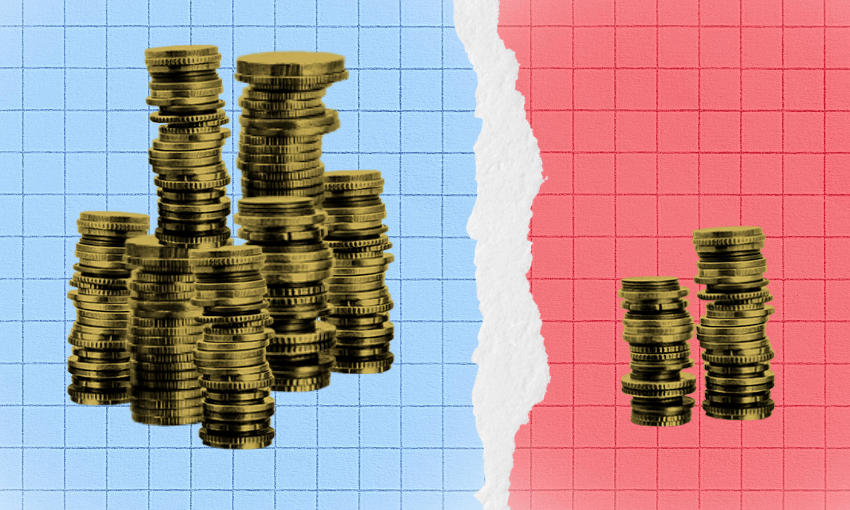Political party finances have been revealed – here’s what they show.
Our elections are not fought on a level playing field. That’s the inescapable conclusion from the first-ever look behind the veil of secrecy that has traditionally shrouded the finances of our main political parties.
Until now, parties’ accounts have largely remained confidential, on the basis that civil-society bodies are entitled to a fair degree of privacy about their activities and levels of funding. But under a law change brought in by former justice minister Kiri Allan, they now have to publish their annual accounts.
This brings New Zealand in line with countries like the UK, who have long mandated such publication on the grounds that, given parties’ crucial role in political contests, there is a public interest in knowing how well-resourced they are and where they spend their money. Such transparency is, in any case, business as usual for parties like the Greens that have been publishing its accounts for years.
So what do the accounts show us? Most obviously, a massive resource imbalance between our two biggest parties, National and Labour. On pretty much every financial measure, the right is smashing the left.
Take, for instance, the relative financial states of health of the two parties as they entered an election year. At the end of 2022, Labour had assets of $3.5m – not bad, one might think, but less than a quarter of National’s $15.8m tally.
The disparities continued into 2023, when National’s revenue of $11.2m was exactly twice Labour’s total. That was in large part thanks to a record haul of donations from wealthy individuals. National spent even more than it earned – around $15.6m – but the resulting $4m deficit (after accounting adjustments) was easily absorbed by its enormous balance sheet. Labour, by contrast, couldn’t afford to run that kind of loss, and spent less than half its rival’s total, around $7m.
Elsewhere, National outspent Labour on staff salaries by two-to-one ($2.2m versus $910,000). And when it came to the most crucial figure of all, 2023 election campaign spending, the same old disparity cropped up: National’s $7.6m budget was nearly double that of Labour’s $4.3m.
This figure is crucial because it is sometimes believed that the parties spend roughly equivalent amounts contesting an election. The confusion arises because, until now, the only figures officially reported have been the amounts lavished on advertising in the three months prior to the election, the one part of campaign spending that is rigorously limited (and indeed subsidised) by the state.
Election expenses, though, go far beyond the adverts that run on billboards, in newspapers and on social media. Successful campaigns require paid staff and strategists, near-constant polling and focus groups, travel and venue hire budgets, volunteer coordinators, and the creation of ever-larger and more sophisticated voter databases. Then there is the advertising that parties run before the three-month election campaign – the “regulated period” – officially begins.
Although vast pots of money cannot turn around a fundamentally flawed campaign, even National strategists like David Farrar admit that parties “always want more money than less, because it gives you options”. The latest international research also suggests parties with bigger war chests generally win more votes: one large study of French and British elections found that “an increase in spending per voter consistently improves candidates’ vote share”. National’s ability to vastly out-spend Labour, on a nearly two-to-one basis, implies that our elections are not a fair and even contest.
This imbalance looks set to continue. Revenue-generating assets are one foundation of future prosperity, and National’s accounts record $2.3m in “investments” and $2m in “investment property”– the latter underscoring its reputation as the party of landlords – while Labour’s equivalents appear to be $660,000 and $0, respectively.
The parties’ reliance on big-money donors also appears to be a permanent fixture. National, once reputed to have hundreds of thousands of members, now declares just 23,000, who between them generated a measly $160,000 in revenue. Labour does not state its membership, but its revenue line for “levies, membership and affiliation”, some of which is union-derived, totals $750,000. While evidently more substantial than its rival’s sum, this still comprised just one-tenth of Labour’s 2023 revenue. All of which points to a future in which parties’ ability to compete for votes hinges substantially on their success in attracting wealthy patrons.
There is an alternative, as my Victoria University colleague Lisa Marriott and I recommended in our 2022 report Money for Something: capping donations from individuals at around $15,000 a year, and using tax credits to incentivise donations up to $1,500. This would shift the funding of political parties away from large donations from a small number of people, and towards small donations from a large number of people.
This would reduce opportunities for undue influence and help level the playing field between parties. Elections would become, to a greater extent, contests of ideas, not money. Last year’s Independent Electoral Review made largely the same recommendations, as did a report this month from the Helen Clark Foundation. The intellectual consensus for reform is growing; whether anything changes, though, is another matter.

